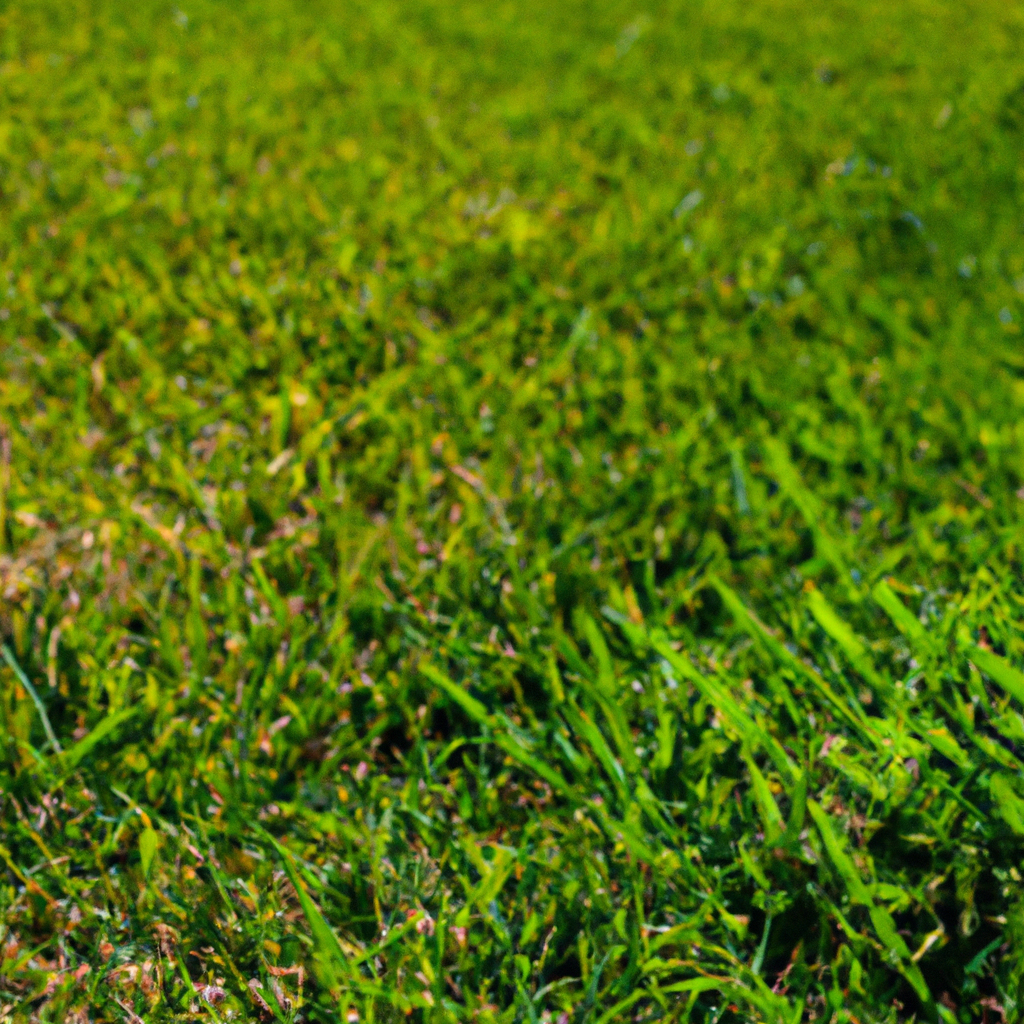Are you a proud owner of a fescue lawn? Well, you might be intrigued to learn about the impact high temperatures can have on the growth of your beloved fescue. In this article, we will explore the fascinating world of fescue growth and delve into the insights and solutions that can help you ensure its vitality, even under scorching heat. From understanding the physiological changes that occur in fescue plants to implementing effective strategies to maintain its health, we’ve got you covered. So, grab your beverage of choice, sit back, and let’s uncover the secrets of how high temperatures affect fescue growth!
Understanding Fescue Growth
Overview of fescue grass
Fescue grass, also known as Festuca, is a cool-season grass that is widely used in lawns and athletic fields. It is known for its adaptability, durability, and ability to thrive in various soil conditions. Fescue is a bunch-type grass with fine blades and a deep green color, making it visually appealing. It establishes a dense turf and has good tolerance to shade, making it suitable for areas with limited sunlight.
Factors affecting fescue growth
Several factors influence the growth and development of fescue grass. These include temperature, moisture, sunlight, soil conditions, and nutrient availability. Of these factors, temperature plays a crucial role in determining the health and vigor of fescue. Both high and low temperatures can have adverse effects on fescue growth, but in this article, we will focus on the impact of high temperatures.
Importance of temperature in fescue growth
Temperature is a critical factor influencing the growth and survival of fescue grass. Fescue is a cool-season grass that thrives in temperatures ranging from 60 to 75 degrees Fahrenheit (15 to 24 degrees Celsius). When the temperature rises above this optimal range, fescue grass can experience heat stress, leading to a range of detrimental effects on its growth and overall health. Understanding these effects is essential for effectively managing and maintaining fescue lawns in high-temperature regions.
Effects of High Temperatures on Fescue Growth
Optimal temperature range for fescue growth
Fescue grass grows best in a temperature range between 60 and 75 degrees Fahrenheit (15 and 24 degrees Celsius). Within this range, the grass exhibits optimal growth rates, healthy root development, and efficient photosynthesis. However, when exposed to temperatures above this range, fescue grass becomes susceptible to heat stress, which can hamper its growth and vitality.
Physical damage caused by high temperatures
When exposed to high temperatures, fescue grass can experience physical damage. The intense heat can cause leaf burn, resulting in wilting, discoloration, and even scorching of the foliage. The grass may turn yellow or brown, giving it a dull and unattractive appearance. This physical damage weakens the grass and impairs its ability to perform essential functions, such as photosynthesis and nutrient absorption.
Reduced photosynthesis and growth rates
High temperatures can adversely affect the photosynthetic process in fescue grass. Excessive heat leads to an increase in stomatal closure, reducing the grass’s ability to take in carbon dioxide, a crucial component of photosynthesis. As a result, the grass’s growth rates become inhibited, and its overall vigor declines. Reduced photosynthesis also affects the grass’s ability to produce carbohydrates, which are vital for its energy requirements and overall health.
Decreased nutrient uptake and utilization
Heat stress caused by high temperatures can disrupt the nutrient uptake and utilization in fescue grass. The excessive heat can impact the roots’ ability to absorb nutrients from the soil, leading to nutrient deficiencies. This deficiency further weakens the grass’s overall health and reduces its ability to withstand stressors such as disease and pest infestations. Adequate nutrient management becomes crucial in mitigating the impact of high temperatures on fescue growth.
Increased susceptibility to diseases and pests
Heat stress compromises the immune system of fescue grass, making it more susceptible to diseases and pests. High temperatures weaken the grass, providing an ideal environment for pathogens and insects to thrive. Fungal diseases, such as brown patch and dollar spot, become more prevalent in heat-stressed fescue lawns. Similarly, pests like chinch bugs and armyworms find weakened grass more appealing, leading to potential infestations. Maintaining proper lawn care practices and implementing appropriate disease and pest management techniques are essential for combating these issues.

Signs of Heat Stress in Fescue Grass
Leaf wilting and discoloration
One of the prominent signs of heat stress in fescue grass is leaf wilting and discoloration. As the grass struggles to cope with high temperatures, its leaves may lose turgidity and droop, unable to retain moisture adequately. This wilting is often accompanied by a change in leaf color, with the grass turning yellow or brown.
Stunted growth and slow recovery
Heat-stressed fescue grass experiences stunted growth and a slow recovery rate. The grass’s growth cycles become disrupted, causing it to exhibit poor growth or even stop growing altogether. Even once the temperature returns to more favorable conditions, the grass may take longer than usual to recover and resume its normal growth patterns.
Increased presence of weeds
Heat stress weakens the fescue grass, creating favorable conditions for weeds to thrive. Weeds may opportunistically invade patches of stressed grass, taking advantage of the weakened competition. Regular weeding and maintaining a healthy turf density through proper lawn care practices become crucial in minimizing weed infestations in heat-stressed fescue grass.
Thinning of turf density
Heat stress can lead to a thinning of the turf density in fescue lawns. As the grass weakens and struggles to grow, bare patches may start to appear, leaving the lawn looking sparse and uneven. This loss of turf density not only affects the visual appeal of the lawn but also reduces its ability to withstand further stressors and recover from damage.
Root damage and shallow root development
High temperatures can damage the root system of fescue grass, impacting its ability to absorb water and nutrients from the soil. The excessive heat can cause root desiccation and dieback, leading to shallow root development. Shallow roots are more susceptible to drought stress and can further exacerbate the impact of high temperatures on fescue growth. Proper irrigation and root management practices are essential in alleviating root damage caused by heat stress.
Adaptation Strategies for Fescue in High Temperatures
Selecting heat-tolerant fescue varieties
When establishing a fescue lawn in high-temperature regions, selecting heat-tolerant fescue varieties can greatly enhance its resilience. Many turfgrass breeders have developed fescue varieties that exhibit better tolerance to high temperatures. These varieties are bred to withstand heat stress and maintain good growth rates and overall health even in challenging climatic conditions.
Providing proper irrigation and drainage
Proper irrigation and drainage practices are essential in managing and mitigating the impact of high temperatures on fescue growth. Watering deeply and infrequently is recommended to promote deep root growth and increase the grass’s tolerance to heat stress. Additionally, ensuring adequate drainage is crucial to prevent waterlogging, which can further stress the grass and increase the risk of diseases.
Implementing shade or protective coverings
To shield fescue grass from the direct heat of the sun, implementing shade or using protective coverings can be beneficial. Planting tall trees or constructing shade structures strategically can help create shaded areas that provide relief to the grass during the hottest parts of the day. Protective coverings, such as temporary shade cloths or awnings, can also be used to shield the grass from intense sunlight.
Mulching to regulate soil temperature
Mulching around fescue grass can help regulate the soil temperature, particularly during hot summer months. Applying a layer of organic mulch, such as wood chips or straw, helps insulate the soil, reducing temperature fluctuations. Mulching also helps retain soil moisture, preventing rapid evaporation and keeping the root zone cooler.
Adjusting mowing practices for heat stress
Mowing height and frequency should be adjusted to accommodate heat-stressed fescue grass. Raising the mowing height allows the grass to shade its own soil surface, helping to maintain cooler soil temperatures. It also helps promote deeper root growth, enabling the grass to access moisture and nutrients further down in the soil. Additionally, reducing the frequency of mowing minimizes stress on the grass, allowing it to conserve energy and recover from heat-induced damage.

Watering Techniques for Heat-Stressed Fescue
Establishing a watering schedule
Establishing a watering schedule is crucial for managing heat-stressed fescue grass effectively. It is recommended to water deeply and infrequently to promote deep root growth and increase the grass’s resilience to high temperatures. Watering in the early morning or late evening when temperatures are cooler helps minimize evaporation and ensures proper water absorption by the grass.
Watering deeply and infrequently
Providing deep watering to the fescue grass helps encourage the growth of deep roots, which are better equipped to withstand heat stress. Instead of light and frequent watering, aim for deep watering that penetrates the soil surface and reaches the root zone. This allows the grass to access moisture deeper in the soil, reducing its reliance on shallow moisture that can quickly evaporate during hot weather.
Utilizing morning or evening watering
Watering fescue grass in the early morning or late evening is recommended to maximize water absorption and minimize water loss due to evaporation. During these times of the day, temperatures are cooler, and the grass has a higher capacity to retain moisture. This ensures that the grass receives adequate hydration while optimizing water usage.
Monitoring soil moisture levels
Monitoring soil moisture levels is vital in determining the optimal time to water heat-stressed fescue grass. A simple soil moisture meter or conducting a visual inspection can help assess whether the soil requires watering. It is important to avoid overwatering, as excessive moisture can lead to shallow root development and increase the risk of disease. Conversely, underwatering can further stress the grass. Striking the right balance ensures the grass remains healthy and resilient in high-temperature conditions.
Avoiding overwatering and runoff
Overwatering can have detrimental effects on fescue grass, particularly in high-temperature regions. It can lead to shallow root growth and water runoff, resulting in nutrient leaching and wasted water. It is important to adjust watering practices based on the grass’s needs, monitoring soil moisture levels, and avoiding excessive irrigation. Proper water management ensures the grass remains adequately hydrated without the risk of waterlogging.
Nutritional Requirements for Heat-Stressed Fescue
Importance of proper fertilization
Proper fertilization is crucial for maintaining the health and vigor of heat-stressed fescue grass. Adequate nutrient supply ensures that the grass has the necessary resources to withstand high temperatures and recover from stress. It is important to develop a fertilization plan tailored to the specific needs of fescue grass, considering factors such as soil composition, nutrient deficiencies, and the grass’s growth cycle.
Choosing balanced fertilizer formulations
When fertilizing heat-stressed fescue grass, choosing balanced fertilizer formulations is essential. A balanced fertilizer provides a mix of essential nutrients, including nitrogen (N), phosphorus (P), and potassium (K), necessary for the grass’s growth and overall health. However, it is important to avoid excessive nitrogen application, particularly during periods of high temperatures, as it can further stress the grass and increase susceptibility to diseases.
Supplementing with micronutrients
Supplementing heat-stressed fescue grass with micronutrients can help enhance its resilience to high temperatures. Micronutrients, such as iron, manganese, and zinc, play crucial roles in various metabolic processes within the grass. They contribute to its overall health, stress tolerance, and disease resistance. Regular soil testing can help identify any micronutrient deficiencies and guide the appropriate supplementation.
Avoiding excessive nitrogen application
While nitrogen is an essential nutrient for fescue grass, it is important to avoid excessive application, especially during periods of high temperatures. Excessive nitrogen can increase the grass’s growth rate, making it more susceptible to heat stress. It can also contribute to thatch buildup and nutrient imbalances. Following proper fertilization recommendations and conducting regular soil tests can help ensure the grass receives an optimal amount of nitrogen for its needs.
Applying organic matter for soil health
Applying organic matter, such as compost or well-decomposed manure, can improve soil health and nutrient availability for heat-stressed fescue grass. Organic matter enhances soil structure, moisture retention, and nutrient-holding capacity. It also promotes beneficial microbial activity, allowing for better nutrient cycling and root development. Incorporating organic matter into the soil during lawn establishment or through topdressing can go a long way in supporting the grass’s growth and overall health.

Disease and Pest Management for Heat-Stressed Fescue
Identification and prevention of common diseases
Proper identification and prevention of common diseases are crucial for maintaining the health of heat-stressed fescue grass. Regular monitoring for signs of diseases, such as brown patch or dollar spot, can help detect issues early. Implementing appropriate cultural practices, such as proper irrigation, avoiding excessive fertilization, and improving air circulation, can help prevent disease development. Additionally, selecting disease-resistant fescue varieties and applying fungicides when necessary can further protect the grass from pathogens.
Implementing appropriate cultural practices
Implementing appropriate cultural practices is essential in minimizing disease and pest issues in heat-stressed fescue grass. These practices include regular mowing at the appropriate height, proper irrigation, and adequate fertilization. Maintaining a consistent and balanced lawn care regimen promotes the grass’s overall health and strengthens its natural defense mechanisms against diseases and pests.
Utilizing integrated pest management techniques
Integrated pest management (IPM) techniques focus on preventing and managing pest issues in an environmentally friendly manner. IPM combines various strategies, including cultural practices, biological controls, and, when necessary, targeted pesticide applications. By employing IPM techniques, heat-stressed fescue grass can be effectively protected from pests like chinch bugs and armyworms, minimizing the need for excessive chemical treatments.
Treating fungal infections and insect infestations
When heat-stressed fescue grass falls victim to fungal infections or insect infestations, prompt treatment is necessary. Fungicides and insecticides specifically formulated for treating these issues can be applied according to label instructions. However, it is essential to identify the specific pathogen or pest and ensure that the treatment is appropriate and effective. Consulting with a professional or local extension services can provide guidance and expert advice in handling such challenges.
Promoting overall lawn health and resilience
Promoting overall lawn health and resilience is key to preventing and managing disease and pest issues in heat-stressed fescue grass. Regular aeration, overseeding, and maintaining proper lawn care practices help create a strong and robust turf that can better withstand stressors. A healthy lawn is less prone to disease and pest problems, ensuring the long-term viability and appearance of the fescue grass.
Long-Term Heat Mitigation Strategies for Fescue Lawns
Improving soil composition and aeration
Improving the soil composition and promoting proper aeration in fescue lawns can aid in long-term heat mitigation. Aerating the soil reduces compaction, improves water infiltration, and promotes root development. Additionally, amending the soil with organic matter, such as compost, helps enhance its structure, moisture-holding capacity, and nutrient availability. These practices create a healthier root environment, increasing the grass’s ability to cope with high temperatures.
Enhancing turfgrass vigor through overseeding
Overseeding heat-stressed fescue lawns helps enhance their turfgrass vigor and improve their resilience to high temperatures. Overseeding introduces new grass seeds into existing lawns, increasing the overall density and providing fill-in for areas that have thinned out. This process helps rejuvenate and thicken the turf, improving its ability to recover from stress and withstand the challenges of hot weather.
Promoting deep root growth
Promoting deep root growth is crucial for heat-stressed fescue lawns. Deep roots allow the grass to access moisture and nutrients further down in the soil, reducing its reliance on surface moisture that can quickly evaporate. Proper watering practices, regular aeration, and appropriate fertilization can all contribute to the development of deep, healthy roots. This enhances the grass’s ability to tolerate high temperatures and maintain its overall health.
Managing thatch buildup
Thatch buildup can create an unfavorable environment for heat-stressed fescue lawns. Excessive thatch, a layer of organic matter that accumulates on the soil surface, can impede water infiltration, nutrient availability, and root development. Regular dethatching or core aerating helps manage thatch buildup, improving air circulation and reducing stress on the grass. This ensures that excess heat is not trapped within the turf, minimizing the impact on fescue growth.
Seeking professional lawn care advice
In complex lawn care scenarios or particularly challenging high-temperature regions, seeking professional advice is highly recommended. Professional lawn care providers, such as certified turfgrass specialists or local extension services, possess the knowledge and expertise to assess specific lawn conditions and develop tailored strategies for managing heat stress in fescue grass. They can guide homeowners in implementing effective, long-term heat mitigation techniques to ensure the health and longevity of their lawns.

Research and Innovations in Heat-Resistant Fescue
Emerging fescue cultivars for high-temperature regions
Ongoing research and breeding efforts have led to the development of emerging fescue cultivars specifically adapted to high-temperature regions. These heat-resistant fescue varieties exhibit improved tolerance to heat stress and continue to thrive under challenging climatic conditions. Continued advancements in turfgrass breeding techniques have contributed to the expansion of the available options for homeowners and professionals seeking resilient fescue grass varieties.
Genetic studies on heat tolerance in fescue varieties
Genetic studies focused on heat tolerance in fescue varieties have provided valuable insights into the grass’s physiological responses to high temperatures. By understanding the underlying genetic mechanisms that contribute to heat tolerance, breeders can target these traits for improvement in their breeding programs. Genetic studies contribute to the development of more heat-resistant fescue cultivars, allowing for the cultivation of healthy lawns even in the face of challenging heat conditions.
Advancements in turfgrass breeding techniques
Advancements in turfgrass breeding techniques have accelerated the development of heat-resistant fescue varieties. Molecular marker-assisted breeding, genetic transformation, and genome sequencing technologies have all contributed to more efficient and precise breeding programs. These techniques allow breeders to identify and select desirable traits, such as heat tolerance, more effectively, ultimately leading to the development of improved fescue cultivars for high-temperature regions.
Exploration of heat stress mechanisms in fescue
Researchers are continually exploring the heat stress mechanisms in fescue grass to gain deeper insights into its response to high temperatures. Understanding the physiological and biochemical changes that occur in the grass under heat stress helps identify potential targets for intervention and improvement. By unraveling the intricacies of heat stress mechanisms in fescue, researchers can develop more effective strategies for managing and mitigating the impact of high temperatures on its growth.
Application of biotechnological solutions
Biotechnological solutions, including genetic engineering and targeted gene manipulation, hold promise for enhancing heat tolerance in fescue grass. Researchers are investigating the application of biotechnological approaches to introduce desirable traits related to heat stress response and tolerance. These advancements have the potential to revolutionize fescue grass breeding and offer practical solutions for maintaining healthy lawns in high-temperature regions.
Conclusion
Understanding how high temperatures affect fescue growth is crucial for maintaining healthy, vibrant lawns. Heat stress can have detrimental effects on fescue grass, impacting its growth rates, nutrient uptake, and overall health. However, by implementing adaptation strategies, such as selecting heat-tolerant varieties, providing proper irrigation, and promoting overall lawn health, homeowners can successfully mitigate the impact of high temperatures on fescue lawns. Ongoing research and innovations in heat-resistant fescue cultivars and biotechnological solutions offer even more possibilities for creating resilient lawns that thrive in high-temperature regions. By combining practical lawn care practices with scientific advancements, homeowners can ensure their fescue lawns remain lush, green, and resilient, even in the face of challenging heat conditions.

